
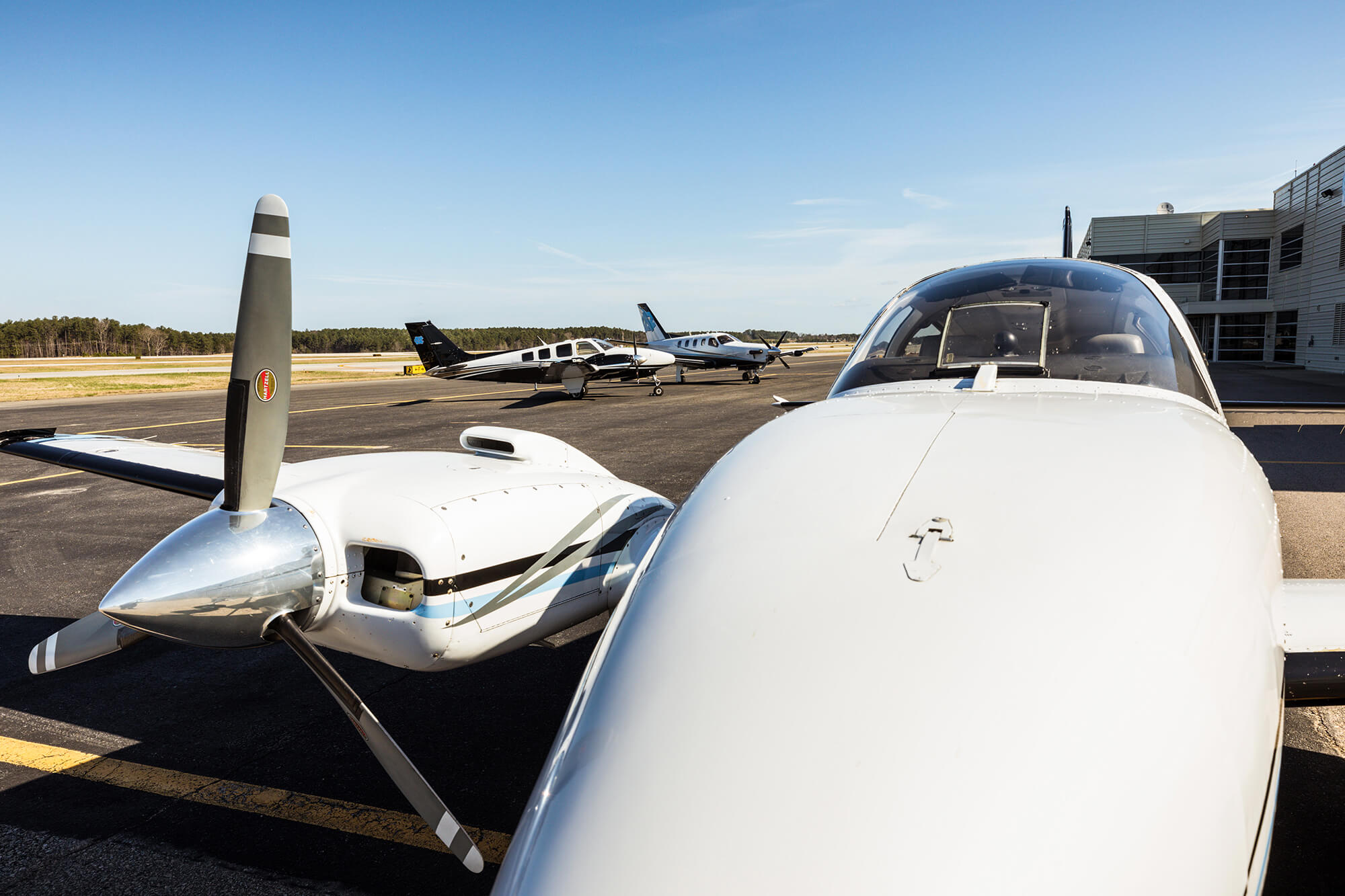
With five light aircraft, the University of North Carolina brings world-class medical care to communities across the Tar Heel State.
July 18, 2019
In 15 towns across the Tar Heel State, residents have access to world-class healthcare from the University of North Carolina (UNC) because of business aviation.
Once or twice a month, UNC Air Ops flies to each town, from Asheville to Wilmington, “and we bring doctors and health educators,” said Director Gordon Kramon.
Nearly every weekday, medical teams go out across the state, providing care, teaching patient health classes and giving lectures. Through the Area Health Education Centers program, underserved communities get access to specialists from the university’s world-class teaching hospital in Chapel Hill.
Some of these clinics and centers are close enough to drive to, but for about two-dozen more distant communities, like Wilmington, it’s only practical for UNC’s clinicians and faculty to fly. The university operates three Beechcraft Barons and two Daher TBMs, flying an average of four trips per day.
“People love to see these UNC airplanes show up in their town,” said Kramon, “because they know it means we brought a doctor. And these doctors save lives.”
Pediatric cardiologists, neurosurgeons, HIV immunologists and many other skilled medical specialists travel on the university’s aircraft, from the mountains to the coast.
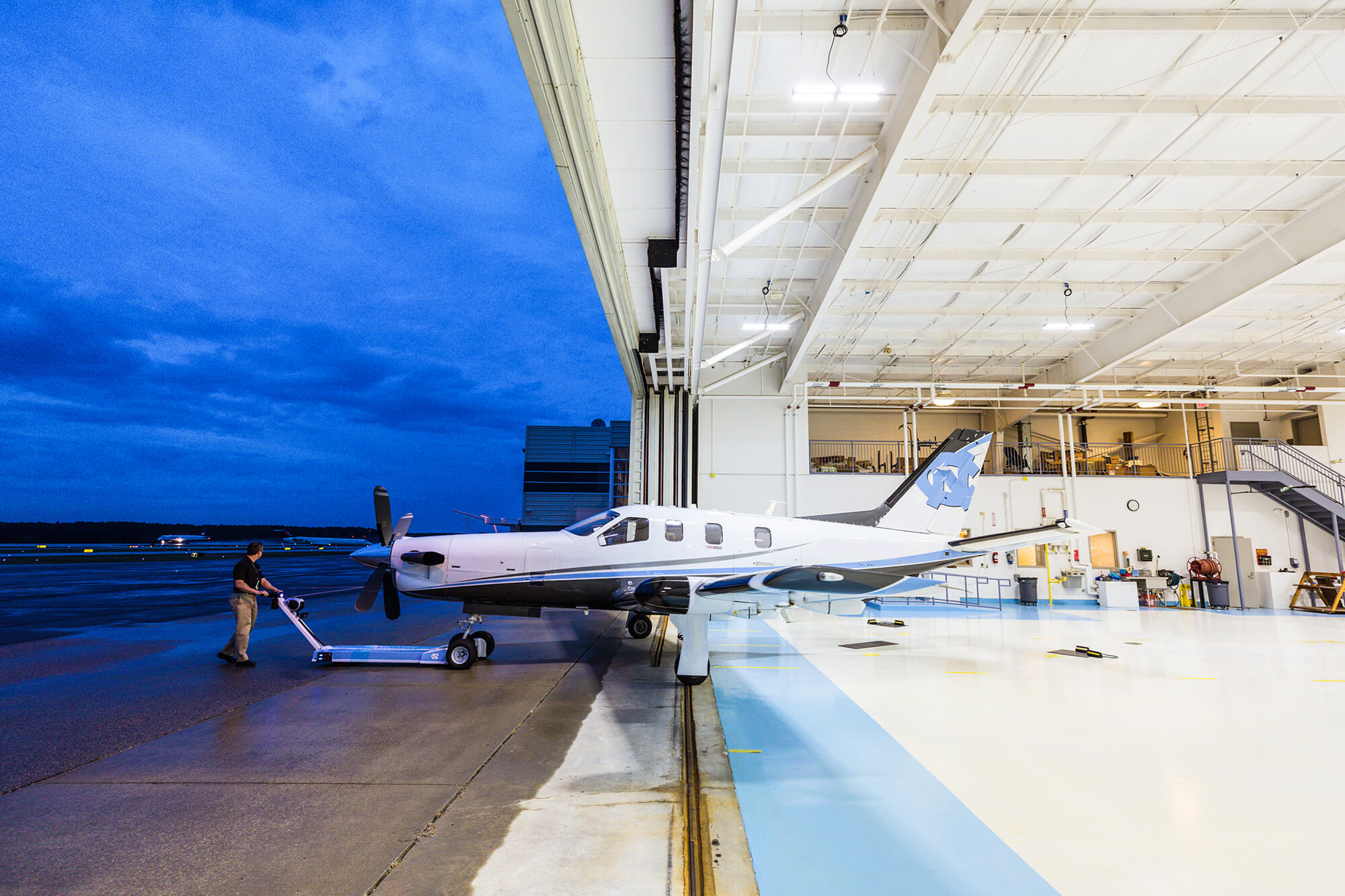
EQUIPMENT UPGRADES
Many UNC Air Ops flights take them to challenging airfields – some shorter than 3,000 feet. “These airplanes are the perfect fit,” said Pilot Chuck Elkins. “The TBMs can easily get in and out of 3,000-foot runways. The Barons can get into even shorter runways, and they have the climb-out performance to take off fully loaded. For the distances we go and the number of people we carry, you can’t beat the efficiency of these airplanes.”
The medical outreach flying began in 1968, when a UNC doctor began visiting rural areas using his own airplane. Since Kramon joined the department in 2009, university and hospital administrators have increasingly used the aircraft for official business travel, but medical out-reach still accounts for more than 70% of all flights.
UNC Air Ops flies nearly 2,000 passengers a year to about 100 different destinations. Over the last decade, the organization has upgraded its aircraft to safely access both uncontrolled rural airfields and busy commercial airports for out-of-state trips.
Acquiring the first TBM in 2011 was an important step. Before that, UNC operated six different models of Barons with different cockpit configurations.
“The TBMs go 320 knots, so we can land at O’Hare without any problem,” said Kramon. “But they also have a 65-knot stall speed, so I can get into a 2,200-foot runway carrying a full team into a remote area.”
UNC’s top priority, however, was standardizing the flight decks in the fleet and increasing situational awareness with new avionics. All the Barons are now B58s, and the TBMs have touchscreen glass panels. All five aircraft are WAAS-enabled and equipped for ADS-B Out.
“Not many airline flight decks could match the situational awareness we have in these airplanes, with synthetic vision, radar traffic and approach plates,” said Pilot Ryan Vernier. “Even in the Barons, we have autopilot and moving-map displays next to the six pack.”
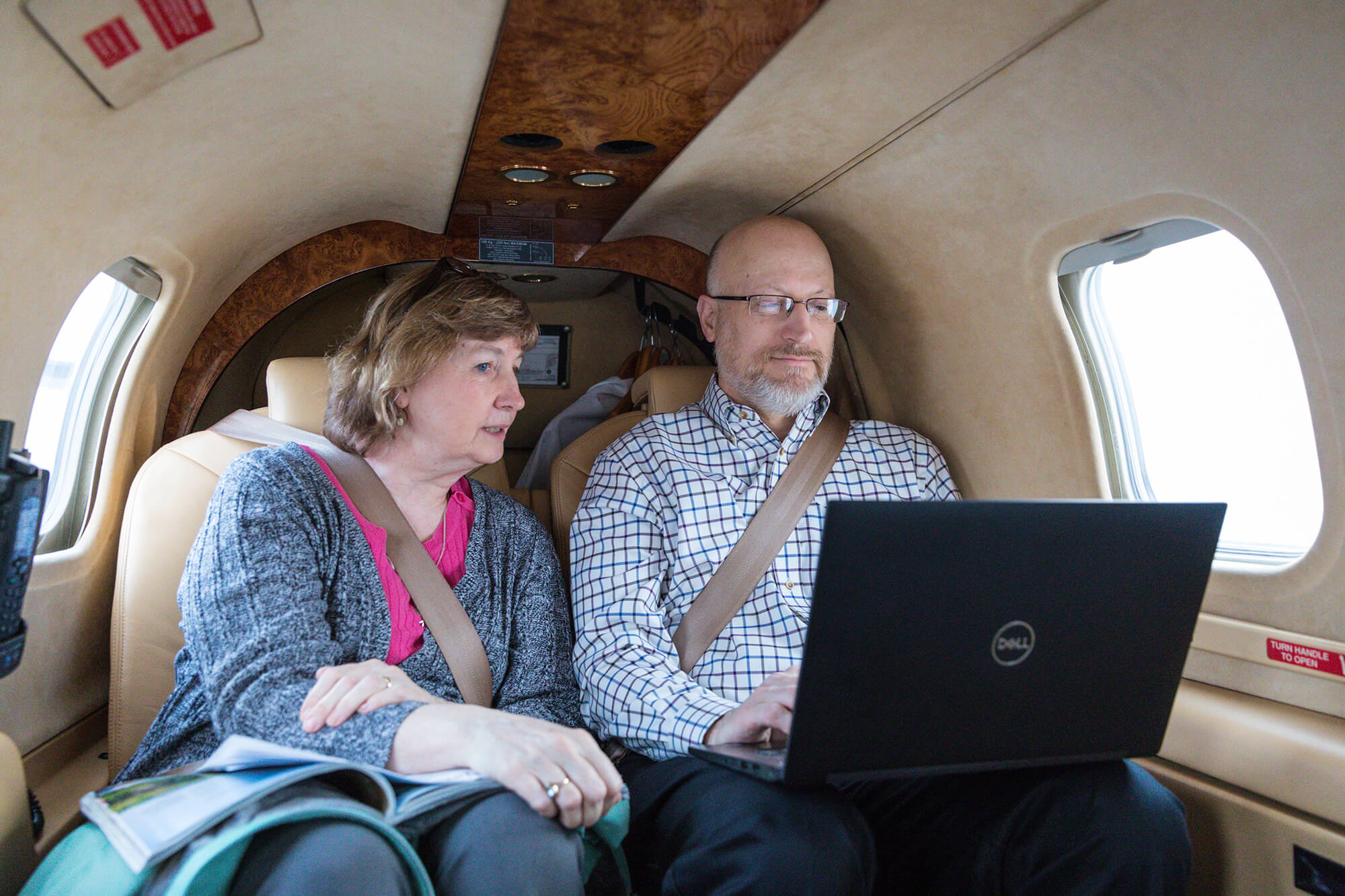
HIGH-PERFORMANCE TEAM
Increased awareness of surrounding traffic helps in both uncontrolled airspace, as well as in congested airspace – especially at night. In those environments, the UNC team wanted the added safety of exterior beacon lights on the TBMs, which are not factory standard.
“Moving around the ground at night on a commercial airport, a big airliner probably is not looking down. They could run right over the top of you,” said Kramon. Taxiing with strobe lights was not ideal either, so “our maintenance team spent a lot of time with the FAA to get approval to put two beacon lights on the top and bottom of both TBMs.”
UNC’s maintenance technicians engineered a solution and documented to the FAA that it would not adversely affect airworthiness or safety. After four months, they received a field approval and completed the modification. “No one’s going to miss [seeing] these air-planes now,” said Kramon. The diversity of environments UNC operates in, as well as its vital health-care mission, motivates them to make the extra effort for safety – rooted in a strong culture of professionalism.
“In 50 plus years of operating, we’ve never had a piston-engine failure,” said Kramon. “That record is due to our dedicated maintenance staff. We have three full-time mechanics, and they are constantly looking at our aircraft. They do weekly and 100-hour inspections on every airplane, and they catch stuff.”
All three technicians are IAs, and they perform engine inspections and annual inspections on the airframes. The TBMs average about 500 hours per year, and the Barons about 200 hours annually. “One of our mechanics won’t do an annual on the same aircraft two years in a row,” added Kramon. “They’ll switch it up to avoid complacency. There’s a safety culture here, and we’re determined to stay an undefeated team.”
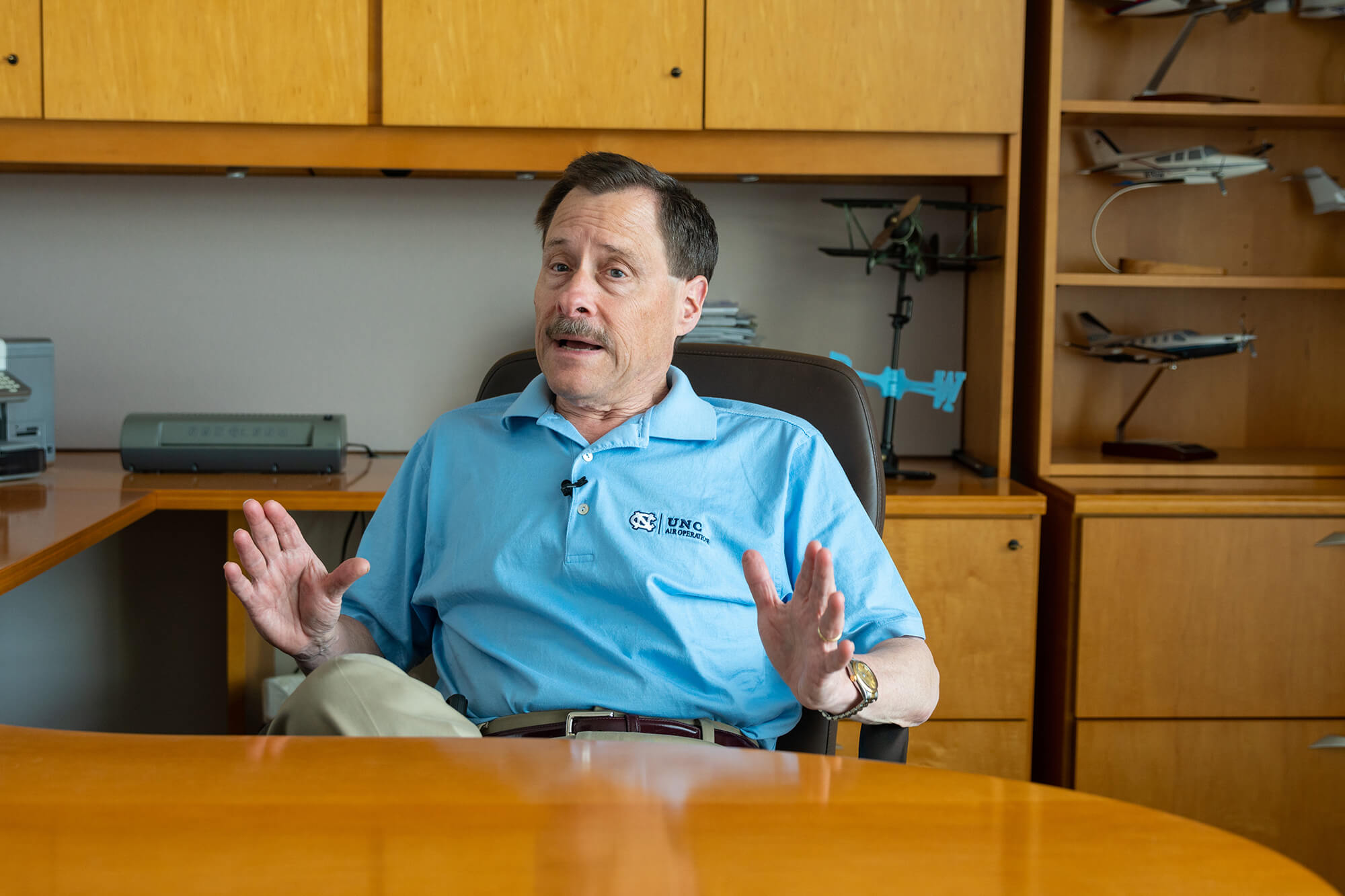
QUALITY OF LIFE
To assemble that team, Kramon and UNC’s administrators have invested in hiring and retaining highly experienced pilots and maintenance technicians.
All four pilots at UNC are ATPs, have more than 6,000 hours of flight time, and are current in both the Baron and TBM. They go to annual simulator train-ing on both types, six months apart. All but Kramon are CFIs. The pilots average about 350 hours a year, except Kramon, who flies nearly 600 hours annually.
“We do six-month check rides here in-house,” said Elkins. “We’ll do everything from a basic IFR ride to emergency procedures to going through all the systems.”
“We are clearly in a pilot shortage right now,” said Kramon, “but we put safety first, we’re fortunate to pay well and offer great benefits. That helps us attract high-time pilots and qualified mechanics. And our group loves what they do. I’m proud of that.”
It’s that environment that attracted Vernier to UNC in 2015 from a regional airline, where he flew Embraer ERJ-145s. The airline’s chief pilot asked why he would leave to fly small piston aircraft. UNC’s out-and-back schedule, with few overnights, was a draw for Vernier, who was starting a family. But that was just one of the advantages he saw.
“It’s a common misconception that the best jobs in aviation are flying heavy metal around the world,” said Vernier.
“When I came to UNC, met the people I’d be working with, saw how well maintained our airplanes are, I realized this was what an aviation job should be.”
SURGE CAPACITY
With five aircraft flying a total of more than 1,500 hours per year, UNC Air Ops is very busy for a university flight department; its four pilots fly a total of about four flights per day.
UNC does not use contract pilots, but the operation does have a close partnership with one of its neighbors on Raleigh-Durham International Airport: the North Carolina Department of Transportation (DOT). One of DOT’s pilots, Dennis Smith, flies about half-time for the university.
“The DOT is actually right next to us, and we help each other out all the time,” said UNC Air Ops Director Gordon Kramon. “It’s a great marriage because we’re separate entities, but we can share each other’s assets, and it’s good for the state.”
When UNC needs six seats, it borrows DOT’s King Air 200. When DOT needs to access a shorter runway, it borrows a Baron from UNC.
In addition to Smith’s part-time role, UNC also has a scheduler who happens to be an ATP. Lotta Nelms, who joined the department in 2012, flies in the right seat of the TBMs about twice a month, is training on the Barons and plans to fly more often.
“Our schedule is busy, and no two days are the same here, that’s what keeps it interesting,” says Nelms. “And I get to fly, which is wonderful.”
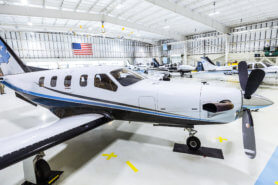
SNAPSHOT: University of North Carolina
Aircraft:
One Daher TBM 850, one TBM 700C2 and three Beechcraft Baron B58s
Base:
Headquartered at Raleigh-Durham International Airport (RDU)
Personnel:
Four pilots (including the director), three maintenance technicians, two air transportation managers and a financial manager


 International Business Aviation Council Ltd.
International Business Aviation Council Ltd.